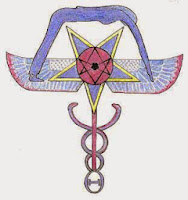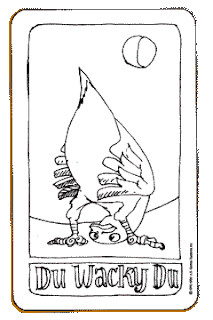The Blarney Stone
"There is a stone there, that whoever kisses,
Oh! He never misses to grow eloquent:
'Tis he may clamber to a lady's chamber,
Or become a member of Parliament."
 "I just want you to know
"I just want you to know  Nasturtium plants were discovered in the jungles of Peru and Mexico in the 16th century. They are easy to grow, edible, cheerful and they are great companion plants as well. Nasturtiums help deter aphids, whiteflies, squash bugs, cucumber beetles and other pests. Plant them with tomatoes, radishes, cabbage, cucumbers, and under fruit trees. They come in vibrant colors, or muted tones-variegated leaves or plain-and some are fairly dwarfed while others can be used as a vine, climbing five foot or more.
Nasturtium plants were discovered in the jungles of Peru and Mexico in the 16th century. They are easy to grow, edible, cheerful and they are great companion plants as well. Nasturtiums help deter aphids, whiteflies, squash bugs, cucumber beetles and other pests. Plant them with tomatoes, radishes, cabbage, cucumbers, and under fruit trees. They come in vibrant colors, or muted tones-variegated leaves or plain-and some are fairly dwarfed while others can be used as a vine, climbing five foot or more. Sylvia's book impresses upon me that just because bad things can happen to good people, there are always lessons learned and something to have been gained by slogging through the bad times. We learn strength, wisdom and even sense of humor and great love of life. This theme was reinforced throughout this book and I have walked away feeling her love for life as well as her personal tenacity like no other. I definitely give this book a big "Lizzie's Logic" seal of approval.
Sylvia's book impresses upon me that just because bad things can happen to good people, there are always lessons learned and something to have been gained by slogging through the bad times. We learn strength, wisdom and even sense of humor and great love of life. This theme was reinforced throughout this book and I have walked away feeling her love for life as well as her personal tenacity like no other. I definitely give this book a big "Lizzie's Logic" seal of approval. Thelema (They-LEE-mah) is a Greek word meaning "will" or "intention". It is also the name of a spiritual philosophy which has risen over the past several hundred years and is now gradually becoming established worldwide.
Thelema (They-LEE-mah) is a Greek word meaning "will" or "intention". It is also the name of a spiritual philosophy which has risen over the past several hundred years and is now gradually becoming established worldwide. The Empress is the Great Mother card. She is the life force that gives birth to all creation. She is abundant and fruitful. Everything in life is born through her. She depicts the true nature with which we are born. When well placed during a reading she indicates that the questioner is using their talents to the full, and when reversed she indicates the opposite or a blockage in this area of your life. In other words, she symbolises a block to using ones inherent gifts and an inability to reach full creative potential.
The Empress is the Great Mother card. She is the life force that gives birth to all creation. She is abundant and fruitful. Everything in life is born through her. She depicts the true nature with which we are born. When well placed during a reading she indicates that the questioner is using their talents to the full, and when reversed she indicates the opposite or a blockage in this area of your life. In other words, she symbolises a block to using ones inherent gifts and an inability to reach full creative potential. On another note...I'd like to introduce you to a terrific new forum called The Magician's Grotto. I recently signed up as a member because ThelmicWaves is such a wellspring of information for me about the tarot, specifically the Thoth tarot deck I recently bought. The topics range from herbalism, spirituality, magick and the Tarot and a wonderful group of people to exchange ideas and information with. I found it extremely refreshing to join such a knowledgeable, high energy, fantastic place to learn and contribute!
On another note...I'd like to introduce you to a terrific new forum called The Magician's Grotto. I recently signed up as a member because ThelmicWaves is such a wellspring of information for me about the tarot, specifically the Thoth tarot deck I recently bought. The topics range from herbalism, spirituality, magick and the Tarot and a wonderful group of people to exchange ideas and information with. I found it extremely refreshing to join such a knowledgeable, high energy, fantastic place to learn and contribute! "Originally this was a tall, thin bird that rapidly peeked (not pecked) through many windows. Later it was a tall, thin bird staring around itself at the dull, stupid life of the Modern Age. Finally it assumed its present form."
"Originally this was a tall, thin bird that rapidly peeked (not pecked) through many windows. Later it was a tall, thin bird staring around itself at the dull, stupid life of the Modern Age. Finally it assumed its present form." You will need:
You will need:  The Rosetta Stone is a stone with writing on it in two languages (Egyptian and Greek), using three scripts (hieroglyphic, demotic and Greek) and was originally carved in 196 BC, during the reign of Pharaoh Ptolemy V. The stone is typical of the period, in which complimentary inscriptions praising the Pharaoh for his virtues were common.
The Rosetta Stone is a stone with writing on it in two languages (Egyptian and Greek), using three scripts (hieroglyphic, demotic and Greek) and was originally carved in 196 BC, during the reign of Pharaoh Ptolemy V. The stone is typical of the period, in which complimentary inscriptions praising the Pharaoh for his virtues were common.  The Ten of Swords represents an ending and utter despair. This card signifies the "victim" mentality. It's time for an attitude change, you were at bottom but that can change.
The Ten of Swords represents an ending and utter despair. This card signifies the "victim" mentality. It's time for an attitude change, you were at bottom but that can change. "Negative feelings or emotions are useless in themselves. Negative attitudes can become positive if one realizes that it is not actions or deeds in themselves that have value, but rather the way one feels. This is not to say actions can be independent of feelings. Harmful actions breed negativity."
"Negative feelings or emotions are useless in themselves. Negative attitudes can become positive if one realizes that it is not actions or deeds in themselves that have value, but rather the way one feels. This is not to say actions can be independent of feelings. Harmful actions breed negativity."